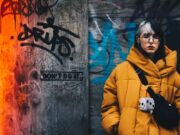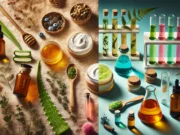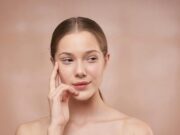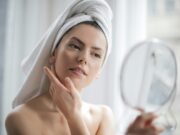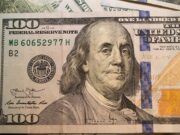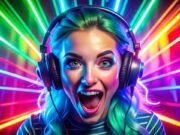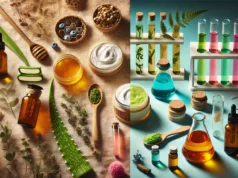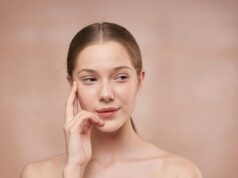- Rise of Influencer Marketing
Emergence of Beauty Influencers and Content Creators
Social media has given rise to beauty influencers who create content focused on makeup, skincare, and fashion. Platforms like Instagram, YouTube, and TikTok have allowed individuals to build personal brands, offering tutorials, product reviews, and beauty tips to a global audience. Unlike traditional advertising, these influencers connect with their followers in a more relatable and authentic way.
Impact of Influencer Endorsements on Consumer Behavior
Consumers now rely on influencers for beauty recommendations rather than traditional advertisements. Influencer endorsements feel more genuine, as they often showcase real-time product application and results. This has significantly changed how people discover and purchase beauty products, making influencer opinions highly influential in the industry.
Shift from Traditional Celebrity Endorsements to Social Media Personalities
Previously, beauty brands relied on celebrities for endorsements. However, with the rise of social media, everyday influencers with engaged followings are more effective at driving sales. Their relatability and hands-on product demonstrations build stronger trust with audiences compared to scripted celebrity commercials.
Sponsored Content and Brand Collaborations
Beauty brands now collaborate with influencers through sponsored content and brand partnerships. These collaborations include product launches, affiliate marketing, and exclusive collections. Influencers, in turn, gain credibility and financial opportunities, making social media marketing a dominant force in the beauty industry.
2. Accessibility and Democratization of Beauty
Easier Access to Beauty Trends, Tutorials, and Product Reviews
Social media has made beauty education and trends more accessible than ever. Users can easily find makeup tutorials, skincare routines, and product reviews with just a few clicks. Platforms like YouTube, Instagram, and TikTok allow beauty enthusiasts to stay updated on the latest trends and learn professional techniques from influencers and experts. This easy access empowers consumers to make informed beauty choices.
Social Media as a Platform for Small and Indie Beauty Brands
Previously, large corporations dominated the beauty industry, but social media has leveled the playing field. Indie beauty brands can now reach a global audience without relying on expensive advertisements. Through social platforms, small brands showcase their products, engage with customers, and compete with well-established companies, leading to greater variety and innovation in the market.
Diverse Representation and Inclusivity in the Beauty Industry
Social media has pushed for more inclusivity in beauty, highlighting diverse skin tones, body types, and gender expressions. Consumers demand representation, encouraging brands to create inclusive product lines. This shift has led to a more accepting and diverse beauty industry that celebrates individuality.
Direct Consumer Engagement with Brands Through Social Platforms
Brands now connect directly with consumers through comments, messages, and live interactions. This engagement allows companies to receive real-time feedback, address concerns, and build customer loyalty. Social media has transformed beauty marketing into a two-way conversation, making consumers feel heard and valued.
3. Evolution of Beauty Standards
Shift from Traditional Beauty Ideals to Diverse and Unconventional Trends
Social media has played a major role in redefining beauty standards. In the past, mainstream media promoted a narrow view of beauty, often favoring specific body types, skin tones, and facial features. However, social platforms have encouraged diversity by showcasing different cultural aesthetics, unique makeup styles, and unconventional trends. This shift has allowed people to embrace their individuality rather than conforming to a single ideal.
The Impact of Filters, Augmented Reality (AR), and Photo Editing
While social media has expanded beauty standards, it has also introduced challenges through filters and photo editing. Many apps offer augmented reality (AR) features that enhance facial features, smooth skin, and alter appearances. While these tools can be fun, they often create unrealistic beauty expectations, leading to self-esteem issues among users who feel pressured to look “perfect” in real life.
The Rise of Body Positivity and Self-Love Movements
Social media has fueled the body positivity movement, encouraging people to embrace their natural looks. Influencers and activists use these platforms to promote self-love, challenge beauty stereotypes, and advocate for representation of all body types, skin conditions, and ages.
Criticism of Unrealistic Beauty Expectations on Social Media
Despite positive changes, social media is often criticized for promoting unattainable beauty standards. Over-edited photos and influencer perfectionism can create pressure to look flawless. Many users are now calling for transparency, encouraging influencers and brands to showcase real, unfiltered beauty.
4. Consumer Empowerment and Transparency
Increased Demand for Authentic and Transparent Marketing
Consumers today seek honesty from beauty brands. Traditional advertising, which often relied on exaggerated claims, is losing effectiveness as people demand genuine representation. Social media has made it easier for consumers to identify misleading marketing, pushing brands to be more transparent about their ingredients, ethical practices, and product effectiveness. Companies that prioritize honesty and authenticity are more likely to gain consumer trust and loyalty.
Rise of User-Generated Content and Real Customer Reviews
User-generated content, such as customer reviews, tutorials, and unfiltered product experiences, has become a powerful marketing tool. Rather than relying solely on brand advertisements, potential buyers turn to real users for honest feedback. Social media platforms allow customers to share their experiences instantly, influencing purchasing decisions and encouraging brands to maintain quality and transparency.
Cancel Culture and Accountability for Brands with Unethical Practices
Social media has given consumers a voice to call out unethical business practices. Whether it’s a lack of inclusivity, misleading claims, or unethical sourcing, brands now face greater accountability. Cancel culture has forced companies to address consumer concerns and make meaningful changes to avoid reputational damage.
Influence of Viral Trends on Product Development and Innovation
Beauty trends spread rapidly on social media, influencing product innovation. From skincare ingredients to makeup techniques, viral content drives brand strategies. Companies now pay close attention to trending topics, ensuring their products align with consumer demands and evolving beauty standards.





